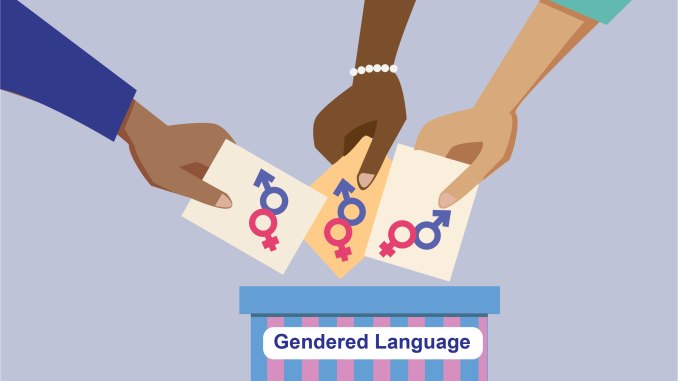
Although more gender-neutral terms are being used in English, gendered language is still common in everyday dialogue because people assume someone’s gender based on their appearance.
Gendered language involves assumptions about gender-based characteristics or a bias toward one gender. For example, using Mr. to refer to any man, regardless of marital status, but using Ms. to refer to a single woman and using Mrs. to refer to a married woman.
Although the effects of everyday dialogue may seem minor, language has a significant impact on how we perceive the world. As a result, people may unintentionally harm others with how they speak by assuming someone’s gender or pushing gender stereotypes.
In the May primary, Philadelphians can vote to remove gendered language from the city’s most important documents. City Council approved two bills on Feb. 24 to replace gendered references in the Home Rule Charter and remove gender-specific language from the charter’s Education Supplement, Billy Penn reported.
While Philadelphians can vote to remove gendered language from these documents, the negative effects of gendered language are also exacerbated through the language people use.
Using gendered language reinforces stereotypes like viewing certain jobs as only available to men, seeing women as inferior and believing only two genders exist. These messages make it difficult to achieve gender equality and should be combated by using gender-inclusive language to respect everyone.
Gender-inclusive language consists of not viewing men as the default and not basing occupation titles on a person’s gender, such as waiter and waitress being gender-specific.
“I don’t use male-gendered language as the norm when I write because it excludes others,” said Amy Friedman, an English professor. “I try to work in a non-gendered way.”
People can swap out gendered phrases for gender-inclusive alternatives. For example, people can address a group as “everyone” and use singular “they” pronouns to refer to a person whose gender they don’t know yet.
It’s important to evaluate the gendered language we may use because of how it can reinforce the idea of only having two genders, said Rob Faunce, an English professor.
Constant references to male and female groupings can be alienating for people who don’t fall neatly into the binary categories. Adjusting our language to reflect gender diversity helps everyone feel included.
“People like to talk about how sick they are of hearing about it, but our day-to-day is just as important as the big issue,” Faunce said.
When comparing countries’ most spoken language and their global gender gap rank, countries where gendered languages are spoken tend to have less gender equality compared to countries with genderless languages, like Iceland and Norway, according to Nimdzi, a market research and consulting company.
Not everyone is a woman or a man, so it’s important to be as inclusive with language as possible, said Brad Windhauser, a professor in the English and gender, sexuality and women’s studies departments.
“So much of what we understand about our world comes through language, and so if we introduce or sort of disrupt language around gender, then I think that will force people to think differently,” Windhauser said.
The amount of gender equality in an area is connected to the language that’s used, and something as small as changing a few words can make a difference in combating stereotypical messages and being inclusive.
There are many opportunities for people to use inclusive language while speaking or writing to promote acceptance, Friedman said.
“Even if every person in a meeting is using [she or he] pronouns, it still says we as a crowd of people are welcoming and we recognize our responsibility to do something to make everyone feel welcome,” Friedman said.
It’s important to affirm transgender and non-binary people through everyday language. Using gender-inclusive language ensures they feel accepted and lessens the impact of gender beliefs by recognizing multiple genders.
The dialogue people use can have an effect on gender equality and how genders are perceived. Adjusting everyday language to be gender-inclusive is a small but significant step toward promoting gender equality and not alienating people during conversations.



Be the first to comment